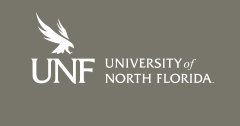Faculty Mentor
Dr. Marie Mooney, Assistant Professor
Faculty Mentor Department
Biology
Abstract
Individuals affected by NGLY1 Deficiency cannot properly deglycosylate and recycle certain proteins. Even though less than 100 people worldwide have been diagnosed with this rare autosomal recessive condition, thousands are affected by similar glycosylation disorders. Common phenotypic manifestations of NGLY1 Deficiency include severe neural and intellectual delay, impaired muscle and liver function, and seizures that may become intractable. Very little is currently known about the various mechanisms through which NGLY1 deficiency affects the body and this has led to a lack of viable treatment options for those afflicted. This experiment uses a loss-of-function (LOF) mouse model of NGLY1 Deficiency homologous to a mutation observed in affected humans that prematurely terminates the protein. Mouse pups with two LOF alleles are embryonic-lethal, and we observe gross morphological effects in the liver and brain of these pups starting as early as embryonic day 15.5 (E15.5). Given the potential for pharmaceutically improving cognitive function post-diagnosis in humans, we focused on understanding the neurological gene expression. Therefore, we harvested cortex and full brain tissue from littermates of a carrier cross at E14.5 to acquire transcriptomes for gene expression analysis. NGLY1 gene counts displayed significant dose dependency across the normal, carrier, and affected littermates with correlated effects in genes dealing with glycosaminoglycan biosynthesis, as expected, and Wnt signaling pathways. Previous knowledge of glycosaminoglycan biosynthesis and recent breakthroughs in treatments utilizing the Wnt signaling pathway provide a foundation for future treatment investigations concerning NGLY1 Deficiency and potentially other glycosylation disorders during development.
Recommended Citation
Batten, Amy
(2022)
"NGLY1 Deficiency Affects Glycosaminoglycan Biosynthesis and Wnt Signaling Pathway in Mice,"
PANDION: The Osprey Journal of Research and Ideas: Vol. 3:
No.
1, Article 3.
Available at:
https://digitalcommons.unf.edu/pandion_unf/vol3/iss1/3
Included in
Biochemistry Commons, Bioinformatics Commons, Biology Commons, Developmental Biology Commons, Genetics Commons, Genomics Commons, Molecular Biology Commons


